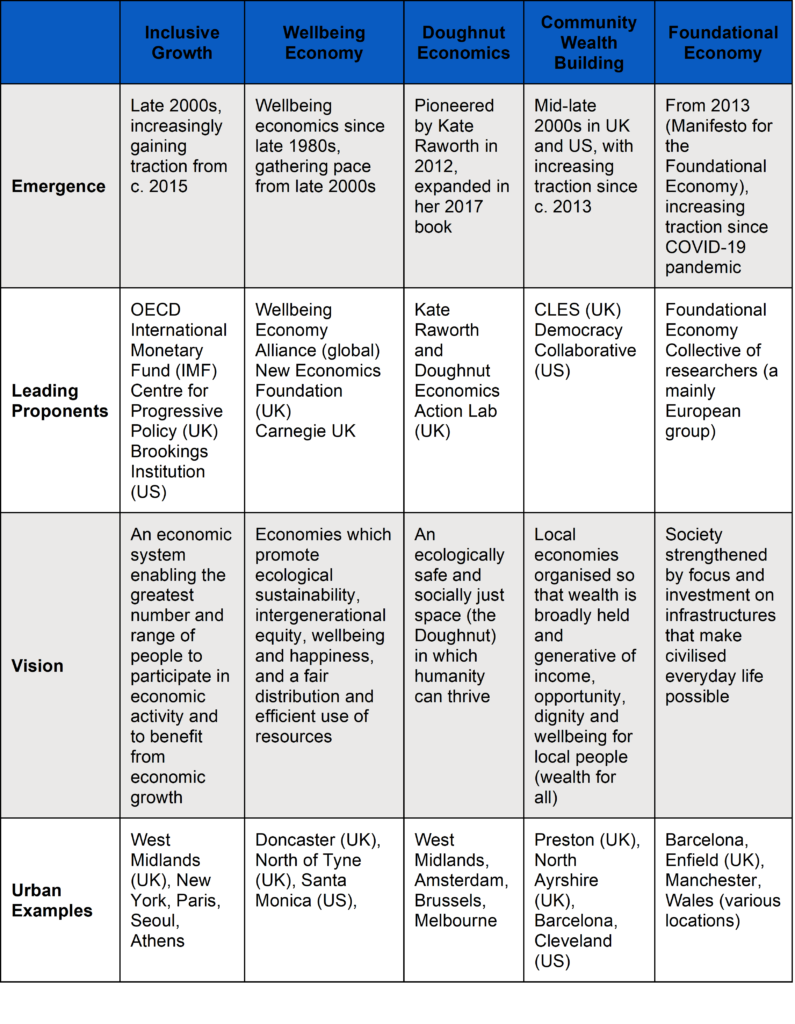The best way approach to regional economic development is still a matter for debate and research, says Dr Richard Crisp from the Centre for Regional Economic and Social Research (CRESR) at Sheffield Hallam University.
Enduring social and spatial inequalities are seeing policymakers across Yorkshire and the Humber grapple with new ways of tackling old problems in recent years. The Doncaster Economic Strategy 2030 launched in January 2023, for example, places the wellbeing economy at the heart of its approach, while also nodding to inclusive growth, community wealth building and the foundational economy as guiding frameworks.
Elsewhere, Leeds City Council’s Inclusive Growth Leeds 2023-2030 strategy champions community wealth building through its Leeds Anchors network which encourages some of city’s largest organisations to employ local people and procure local services.
This accelerating interest in ‘alternative’ approaches to economic development shows a new willingness among local policymakers to experiment and innovate to improve the lives of residents and strengthen communities. A key driver is growing concern that longstanding ‘traditional’ approaches such as promoting growth in high-value ‘tradeable’ sectors have done little to tackle disadvantage or reverse environmental degradation.
“Y-PERN will play a key role in exploring how alternative approaches to regional economic development are being adopted and implemented across the region, and what outcomes and impact is being achieved.”
Dr Rich Crisp
The emergence of alternative approaches creates a complex policy space as different frameworks vie for attention or are combined in a ‘pick and mix’ approach. This is particularly the case in England which lacks the strategic national steer provided by the devolved governments in Wales and Scotland.
For example, the Scottish Government’s Programme for Government 2023 to 2024 outlines commitments to a wellbeing economy and community wealth building. Preparations for a Community Wealth Building Bill and a Wellbeing and Sustainable Development (Scotland) Bill are also under way.
How then are we to make sense of these approaches and their deployment in a fragmented landscape of governance in England, with local authorities and combined authorities – where they exist – all doing things differently? What are the distinctive features of these approaches, how they are being put into practice, and what impact are they having?
A team of academics from universities across the UK explored some of these questions in a recent paper which reviews five of the most commonly implemented approaches, as highlighted in the table below.
An overview of five ‘alternative’ approaches to economic development

Our analysis of cornerstone texts and core strategic documents highlights key differences in the visions set out, the mechanisms to drive change, and the geographic scales and challenges the approaches respond to.
Wellbeing economy and doughnut economics are the two approaches which most clearly articulate a vision of the “good life”, often underpinned by an outcomes frameworks to measure progress. In terms of mechanisms for change, there is a common concern for democratic participation, but also marked differences in terms of prescriptiveness with community wealth building offering the most defined set of principles and tools (e.g. progressive procurement and plural ownership of the economy). With respect to geographic scale, there is rarely clarity on the geographic disparities to be addressed (aside from community wealth building), despite the mobilisation of these approaches by many local authorities.
Our paper identifies key gaps in current knowledge. Advocates claim these approaches can generate transformative economic change. However, we still know little about how they are being understood, adopted and implemented in different places. A lack of evaluation also means evidence on the outcomes and impact of initiatives is also scarce.
To address some of these gaps, the research team are undertaking workshops with stakeholders in Sheffield as well as Birmingham, Cardiff, and Glasgow to gain insight into the experiences, challenges and outcomes of deploying alternative approaches. Due to report in Spring 2024, we hope our work sheds some light on this complex and fragmented policy terrain.
That said, the more recent emergence of further alternative approaches in both academic and policy circles such as degrowth or postgrowth, the circular economy and regenerative economies suggests there is little prospect that the current flux will settle anytime soon.
Y-PERN will play a key role in surveying and clarifying this complex policy terrain by working with academic and policy partners to explore how alternative approaches are being adopted and implemented across the region, and what outcomes and impact is being achieved. Y-PERN provides an ideal platform for sharing learning and good practice from across and beyond the region. This will sharpen understanding around the potential for alternative approaches to support more inclusive and sustainable economies and places.
Richard Crisp is a researcher at the Centre for Regional Economic and Social Research (CRESR) at Sheffield Hallam University. He specialises in research on inclusive and sustainable economies, ‘alternative’ approaches to economic development, poverty, worklessness, and social and spatial inequalities.
Reference and credit for full paper referred to in this blog:
Crisp, R., Waite, D., Green, A., Hughes, C., Lupton, R., MacKinnon, D. and Pike, A. (2023) ‘Beyond GDP’ in cities: assessing alternative approaches to urban economic development. Urban Studies, OnlineFirst. Copyright © 2023 (Crisp, R., Waite, D., Green, A., Hughes, C., Lupton, R., MacKinnon, D. and Pike, https://journals.sagepub.com/doi/full/10.1177/00420980231187884
Image by Freepik



